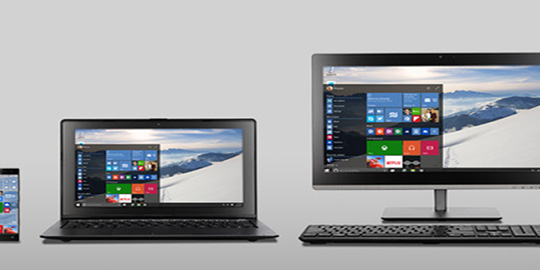
Technology Observatory January 26-February 1
Once again, this week's Technology Observatory. Below follows the news from the last week of January.
● Nexus 6 will not include a fingerprint reader because Apple already exclusively has the best one
● Save memory and data with Facebook Lite
● Rumors have it that Sony Xperia Z4 will not arrive in time for MWC and will be delayed a few months
● Ten million Lumias and profits with Surface Pro 3 confirm Microsoft's bet for hardware
● Twitter presents group messages
● Windows 10 will only be able to run desktop application in screens larger than 8 inches
● Apple sells almost 75 million iPhones: a record quarter
● The Apple Watch will reach the market in April
● That Sony considers selling its cellphone division confirms that manufacturing good telephones is not enough
● Some of the Touchwhiz application of the Samsung Galaxy S6 will not come pre-installed
● Microsoft will invest 70 million in Cyanogen, in its desire to break off from Google
● OnePlus reveals Oxygen OS, its new Android-based operating system
● Samsung announces financial results for Q4 2014
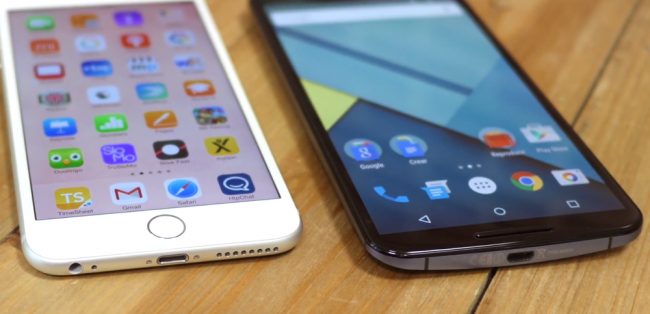
The modernization of the Nexus this year has failed to attain the expected reception, and though the Nexus 6 by Google and Motorola is a fantastic terminal, the truth is that in addition to the obviously restricted target population of a high-end phablet, we must add its high cost, when expectations were that the price policy would be moderate. Amongst negative factors of the Nexus 6 are the poor development of specific software to exploit the possibilities of the enormous 6-inch screen, as well as defects in its hardware which would increase its appeal for professional users. Obviously, we're talking about the fingerprint reader, which is no trivial matter for an expensive terminal targeting the business sector, especially because its direct competitors include it, both the Samsung Galaxy Note 4 as well as the iPhone 6 Plus, and it adds increased biometric security which, in some settings, is crucial. According to the boys from The Verge, apparently Motorola refrained from including a fingerprint reader for the sake of not penalizing the user's experience, as in the words of Dennis Woodside, CEO of Motorola, only the second-best fingerprint sensor was available. Motorola wanted to install the only sensor capable of guaranteeing a sufficiently good user experience and this sensor is exclusively Apple's, after the guys at Cupertino acquired the company Authentec, manufacturer of the mentioned biometric readers, to grant the iPhone TouchID technology. Therefore, and despite the fact that Motorola had been a pioneer with its Atrix in installing fingerprint readers, this time it was obligated to launch one of its most ambitious devices without this functionality. Motorola's explanation is curious, to say the least.
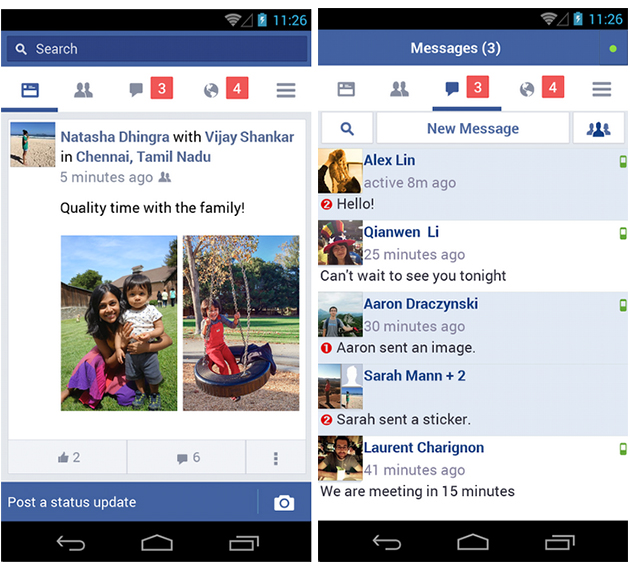
Tired of seeing how much the Facebook application takes up in your phone? Are so many video previews doing away with the performance of your humble phone? Well, worry no longer, because Facebook has prepared a lighter version of its application so you won't have to be concerned about consuming memory or data. Its functions are limited to the basics, though this doesn't mean they are limited, given that you can likewise send messages to your friends, see their feeds, receive notifications and share photos, and furthermore control data consumption, as it is specially designed for use in 2G networks and areas with limited connectivity. The major difference is that, instead of occupying 27 MB as the original application takes up, the Lite version takes up a ridiculous 252 Kb, and it's compatible as of Android 2.2. Right now the application is available in Play Store, though it can only be downloaded from Bangladesh, Nepal, Nigeria, South Africa, Sudan, Sri Lanka, Vietnam and Zimbabwe. Anyhow, the APK is available through the usual servers, so you'll also be able to find it over the web.
Or something is changing or the absence of rumors as to Sony's upcoming flagship appears to reveal that its arrival may be slightly delayed. We were all expecting that in early March the Mobile World Congress would reveal the secrets of the new Sony Xperia Z4, but given our most recent information, this presentation may take approximately another two months. The change would be led by Sony itself, which would opt for presenting it at an event of its own where all cameras will turn to focus on its major bet for the start of 2015. The great beneficiary of this supposed strategy by the Japanese manufacturer would be its current Sony Xperia Z3, which would enjoy another few months in the spotlight. Sony may have changed its mind about launching a high-end terminal every six months. This way, it could reap the profits even more and make a greater qualitative leap forward with innovative changes when switching from one terminal to its heir. One example of this strategy is given by other manufacturers such as LG or Samsung, which are still holding onto the LG G4 and the rumored Samsung Galaxy S6. Which option will Sony opt for? In about another month we'll be put out of our misery, though the Mobile World Congress without great devices and their associated presentations will make it lose out. Despite the fact that these are all merely speculations, Sony hopes to recover all of its splendor and perhaps a change of trajectory in Android is what it needs.
Just a few minutes ago, Microsoft published its financial results corresponding to the quarter October-December 2014 (FY15 Q2), with figures that meet market predictions, with 2014 being a great year for those at Redmond. In total, Microsoft reports revenues of $26.5 billion with shares valued at $0.71, when expectations were of $26.3 billion and $0.71 per share. Where the main protagonists have been cloud services, the business of Lumia and Surface. Record revenues, but with lower profits. Despite obtaining higher revenues compared with the same period the previous years, total earnings were lower, remaining at $5.86 million, while profits for the same quarter the previous year reached $6.55 million. This is mainly because 2014 has been a year of adjustments and the reorganization of the company with the acquisition of Nokia and its intentions set on Windows 10 has led it to make major investments in the company's most important upcoming operating system (and strategic move) of its history. The Devices and Services department has grown 8%, reaching $12.9 million in revenue, and here is where we find great performance, especially for Xbox One, Surface, Lumia, Bing and Office. Xbox One, Surface and Lumia, Microsoft's major weapons. It was no surprise that Microsoft launched a Christmas campaign to promote sales of its Xbox One, and now we know that this campaign successfully achieved the sale of over six and a half million consoles this last quarter alone. Earnings were also yielded through the services offered within the console, with an increase in revenue by 42% for Xbox Live and 79% in sales of games through the platform.
6.6 million Xbox One consoles in the last quarter
On another hand, Lumia sales represented for Microsoft earnings of $2.3 billion with 10.5 million devices sold worldwide. Meanwhile, sales of the Surface Pro 3 and its accessories grew 24%, obtaining earnings of over $1 billion. Office 365, Bing and business services also increase. Office 365 in its home version already has just over 9 million subscribers, the one with the greatest growth compared with the previous quarter, with 30% in only three months. On another hand, we have the Bing search tool which has been gaining ground considerably with earnings for publicity that have grown 23%, with a market share in the United States that has increased by 150 points, settling at 19.7%.
Subscribers of Office 365 have grown 30% in only 3 months
As regards business services, the cloud is giving Microsoft very good earnings, which increased by 5%, representing $13.3 billion thanks to services like Office 365, Azure and Dynamic CRM Online which on their own have grown 114% with earnings of $5.5 billion. Sales of PCs with Windows dropped while awaiting Windows 10. Of course, not everything is growth in this report, given than Microsoft revealed that the sale of computers with Windows, both professional and personal, dropped by 13% each, due to the general decrease of sales in this segment and for new, less expensive licenses for devices sold to clients in the field of education, many of which are equipped with Windows XP. Because of this, earnings for sales of Windows licenses grew only 3%. Last of all, sales of the full Office license version dropped 1%, leaving more space for Office 365, as users increasingly opt for subscription cloud services. No doubt 2015 is going to be a good year for Microsoft, which expects that the arrival of Windows 10, the promotion of its services, and new devices like its Hololens project and the Surface Hub will yield positive results after a somewhat complicated 2014, but which it knew how to bring to an excellent close.
The Twitter blog brings two innovations to its platform, one dedicated to those who use the platform to communicate with several others simultaneously, the other: editing of video through its app. It adds the possibility for holding private group conversations, offering more options for how and who to communicate with using Twitter. This function allows us to start conversations with some of our followers, without requiring us to follow each other. We can create a group and add people to it in just a few seconds, and receive a notification when someone else adds us to one.
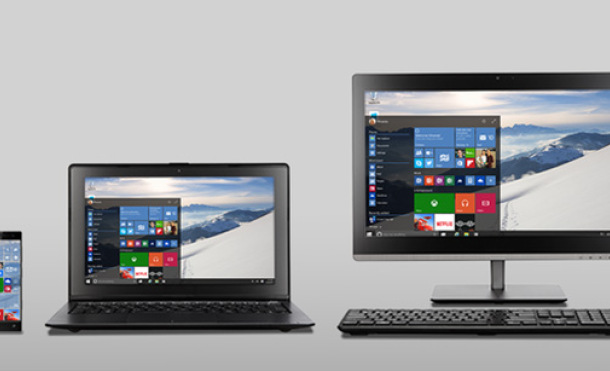
On more than one occasion we have addressed the error of taking desktop applications to touchscreens, but even more so when we speak of small screens, like those of tablets. No matter how much bigger smartphones have gotten, it is totally unfeasible for their interface to be like that of a computer. Neither Android, nor iOS nor Windows Phone have fallen into that trap. There are cases in which tablets have lost out in user-friendliness in wanting to give some applications a more professional appearance. Recently Microsoft has faced a similar dilemma, in preparing Windows 10 with sufficient unification of all of its platforms using this operating system. Small tablets, big tablets, smartphones, convertibles, laptops, personal computers... All with Windows 10: a single store, platform and experience. Despite this unification, it had to set a cut-off point: what's too small and what's not? Through tweets by Joe Belfiore, published by Techspot, we already know: 7 inches were not enough. The arrival of Windows 10 implies that desktop applications may only run on screens of at least 8 inches, curiously the same limit Microsoft set when it decided to offer free Windows licenses for "small" screens. Desktop applications like Office, Illustrator, Photoshop or AutoCAD, which in particular require large screens, will be able to run in screens as small as 8 inches. Only 7-inch tablets that can be updated to Windows 10 will be able to run these desktop applications. This version will be available for everyone at the end of the year. If you want to check it out, Gabriela González has been enamored by Windows 10.
Apple expects good sales figures for the iPhone and the Californian company has just confirmed that almost 75 million iPhones were sold worldwide the first fiscal quarter of 2015. Specifically, the company has presented the figure of 74.6 million iPhones for the quarter that ended on December 27, 2014, though, as usual, it did not offer the breakdown for its two models. However, Cook confirmed that the iPhone 6 model was more successful. This major figure is a record for the company, which had already forecasted that its latest generation of smartphones was being the most successful of all time. Compared with sales for the same period the previous year, which were $51 million, the importance of these sales for Apple is obvious, generating earnings of $18 billion in three months, something never achieved by any company! On a global scale, the quarter has reported Apple earnings of almost $75 billion, a 30% increase compared with the same quarter last year. In 2014 and previous years, earnings grew but were more moderate. What had remained practically intact year after year since 2012 were the profits, which froze at around $13 billion. For Q1 2015, profits reached $18 billion. The pie chart below shows the tremendous importance of the iPhone, a relatively recent product, on the company's earnings:
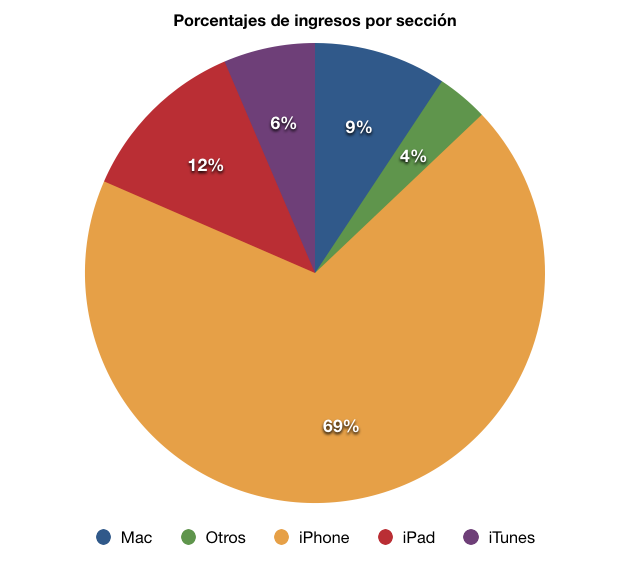
Likewise, China has become the second most important market for Apple, already surpassing Europe in its entirety. Analysts of the Asian giant, which could sustain Apple's good results over the theoretically weaker upcoming quarter, claim that the iPhone has been the most-sold terminal for the first time in its history.
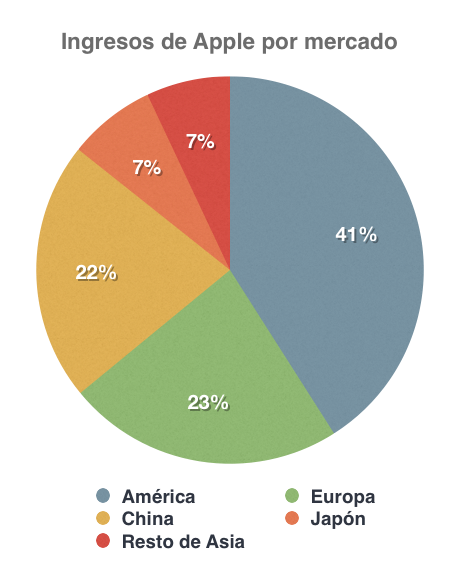
Amongst those services which generated earnings of almost $5 billion for Apple, Apple Pay has been the most relevant in terms of growth. In its first three months in operation in the United States, it is already used for 2/3 of contactless payments, even representing for some businesses, like Panera Bread, 80% of payments. Other important facts we already know are those for its tablet sales. If Apple sold just over 12 million iPads the previous quarter (the new models were not yet available), in the quarter that just ended it sold almost 21.5 million units. This is a considerable drop compared with the same quarter the previous year, which is the comparable quarter. At that time, there were 26 million iPads in the market. With these figures, Apple has announced that this quarter it has sold 1 billion iOS devices. The model that has achieved this great feat is the 64 GB iPhone 6 Plus. As to the computer segment, Apple practically replicates the figures of the previous quarter, selling 5.5 million units, growing slightly compared with last year's quarter, when 4.8 million Macs were sold.
Tim Cook has confirmed, after revealing the results for the first fiscal quarter of 2015, that the Apple Watch will reach the market in April. Apple assured that the Apple Watch will be launched during the first half of 2015, but the CEO of Apple Inc. said little more. We have received news and leaks about this little by little, the greatest secrets being the price of the premium model and the duration of the battery which, according to some leaks, will be of 19 hours with mixed use.
Mobile phones are a complicated market. With Samsung and Apple sitting atop the podium, and Chinese manufacturers like Huawei and Xiaomi gaining ground, it is becoming very difficult for the remaining manufacturers to climb up the ranks and firmly consolidate themselves in the market. This is the current situation for the Sony cellphone division. Figures on smartphones sold in recent years and news published by Reuters lately clearly indicate that Sony is having a hard time. In fact, a few days ago this agency published an article assuring that the Japanese company's directors were considering the option of selling its cellphone division, or of signing a joint venture with another company to increase its competitiveness. Two basically drastic options that clearly describe the delicate moment which Sony is experiencing. The decisions which Sony is apparently making indicate that its directors are willing to implement drastic measures to regain profitability. Just yesterday we were telling you that, according to Reuters, 1,000 employees could lose their jobs, mainly those located in China and Europe, which together with those which have already become unemployed, would represent a total of 30% of the cellphone division's workforce. Hardly nothing at all.
But what's even more surprising is that these layoffs could be just a first step ending up in the sale of this division to another company and, therefore, in the departure of Sony from the cellphone business; something which, as you will recall, happened last year with its laptops and which could extend to its televisions. If this happens in the end it would be bad news for users because the fact that a manufacturer of this class abandons the market, even if the Sony Mobile falls into good hands, could result in a reduction of the product portfolio and, therefore, in less competition. And we all know that competition is the driver of innovation, on one hand, and that, furthermore, it gives us access to better products at an increasingly attractive price. I think that we can all agree that Sony manufactures quality cellphones. Of course, it's fully legitimate to prefer those manufactured by Samsung, Apple, Xiaomi, Oppo or any other brand, but very interesting smartphones can be found in the Xperia range. So, if quality isn't failing, what is? It's not easy to give a precise answer to this question. In fact, it is possible that in reality it is due to a combination of several factors. What certainly doesn't fail is the brand's image. It is possible that Sony no longer has that "pull" it had in the 80s and 90s, but it evidently continues to be a highly valued manufacturer by many users, and the perception still exists defending the idea that quality products still come out of its "burners". We can't even blame Sony either for failing to promote its cellphones through classy marketing, because the truth is that its cellphones appear in very captivating publicity campaigns, and also in that new kind of publicity in which TV presenters and actors directly intervene.
It is likely that the delicate situation of the Sony cellphones division arises of essentially two factors. The first and most obvious is an oversized structure, inherited from better times, which today is a burden for reaching the profitability aspired to by the subsidiary of the Japanese brand. This would explain the idea of laying off another 1,000 workers, a measure which will probably be confirmed next February 4th, coinciding with the presentation of the results for Q4 2014. Another reason that could explain the current situation at Sony is that it has for years been riding on the coattails of Samsung and Apple, two brands with which it seemed to want to rub shoulders. Currently Chinese manufacturers are undergoing major expansion processes, a reality that will possibly impact all of their competitors, even the mentioned Samsung and Apple. The difference is that these two brands are comfortably positioned, a place from which they will be able to better withstand the Chinese assault, but other manufacturers, like Sony, HTC or Motorola, for example, will probably have a harder time, a trend that appears to have begun some time ago. It is also possible that sales at Sony have been conditioned by a policy for launching firmware updates that has been too slow and unambitious, and by a renewal cycle of its high-end cellphones that has perhaps been too short. The upcoming edition of the MWC seems to be incredibly interesting, and not only for the moves that Sony might make, but also because we can sense the strategy to be followed by most cellphones manufacturers in 2015. So, it's worthwhile for us to remain watchful.
Complaints are not few when cellphones and tablets come equipped with preinstalled applications of the manufacturer which are later impossible to remove, particularly in terminals with little storage space. Until now there have hardly been any terminals without preinstalled applications, but Samsung could take a firm step forward and change this trend. According to leaks, the next Samsung cellphone, the Samsung Galaxy S6 will come devoid of preinstalled applications. This would grant us a lot of flexibility in freeing up space for saving other things we consider more important than those applications that we're not always going to use. Another advantage is that this would permit better updates in not requiring the installation of Touchwhiz applications and leave that effort in the basic parts of the operating system. Obviously, this refers to applications that can be downloaded from Google Play. Those which are not available through the Google app store will continue to be included when the phone exits the factory. Even so, this is a major improvement that will give users more freedom in deciding which applications to include in their cellphone.
Microsoft will invest $70 million in the startup Cyanogen, Inc., according to Wall Street Journal. To put us into context, Cyanogen is the company that was born of the success of the modified ROM CyanogenMOD, based on Android Open Source Project (AOSP), that is, the open part of Android, modifiable by anyone who wishes to do so. Recently, we have also known of the pending software development for OnePlus One, the controversial economic flagship. Getting back to the news item, it seems that with $70 million, Microsoft is a minority investor in an investment round that valued the startup at much lower amounts, though who the other investors are is a mystery. Microsoft's investment in Cyanogen is very shocking, in the sense that these companies are developing software in diametrically opposed systems. Cyanogen has always worked with open source code, and Microsoft with proprietary software, though many other brands may access it. To date, though apparently impossible, the relationship between Microsoft and Android, beyond their software, was sufficiently satisfactory, as everyone knows that the company from Redmond gains more earnings from the payment of patents by Android manufacturers than it does from Play Store software and from its own Windows Phone platform (from now on Windows 10). However, it makes sense, given that according to an announcement by the CEO of Cyanogen, the company wants to break away from Google, which entails doing something similar to the Amazon fork. In other words, it will continue to be based on the Android open source code, but will replace the entire Google ecosystem with its own services, which according to the CEO are over-installed. In this regard, Microsoft might have some kind of interest, and even intend to include its services in this new software offer. Beyond that, Google is a major rival for Microsoft and things are far from good between the companies, particularly given the passivity of Google toward the Windows Phone. As per Cyanogen, 50 million users use its software, which would represent 5% of all Android users, an amount which is not at all insignificant for building a future together with a company with major interests, like Microsoft. What's clear is that Google is starting to face many rivals, and sooner or later it will have to do some decision-making as regards Android.
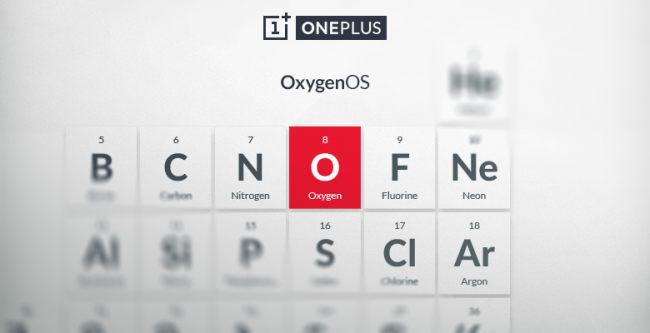
OnePlus breaks away from CyanogenMod and announces its new, own ROM for its brand's terminals: Oxygen OS. Yesterday, the Asian manufacturer OnePlus published an image in Twitter where it announced a launch for today. The image attached to the tweet was a periodic table. Voices started talking and rumors revolved around the possibility of a metal rear case and even the launch of the new OnePlus Two, which according to this announcement, would be made of metal. But, nothing was further from the truth. The fact that the new OnePlus One do not bear the CyanogenMod logo on their reverse is now logical. By referring to a periodic table, OnePlus announced its own ROM for its terminals, which will be called Oxygen OS. And it has dedicated an entry in the OnePlus forum through which it somewhat reveals what the ROM will be like. A lot of emphasis is made on the fact that it will have no bloatware but will offer enough options for personalization and system improvements for optimizing the device. We know little more to date, only that the date of February 12 has been given for the next announcement about this ROM. We'll have to wait until then, and perhaps will find some screenshot or another to imagine what it will be like. Surely this new operating system developed by and for OnePlus terminals will arrive together with the awaited OnePlus Two (we'll have to see if it will follow the same problematic sales policy).
Samsung has informed of its first loss in annual earnings compared with the previous year for the first time in three years. The strong sales of its chips have not been able to save the drop if its cellphone division. Samsung has reported an operating profit in this fourth quarter of KPW5.35 billion ($4.8 billion) and earnings of KPW52.73 billion ($48.6 billion). Astonishing figures which any company would like to report, unless we're talking about Samsung. Compared with the same period the previous year, its operating profit was KPW8.31 billion with earnings of KPW59.28 billion, resulting in drops of 36% and 11% respectively. The results position the company with earnings of KPW25 billion, below its record achieved in 2013 of KPW36.8 billion and reaching a minimum since 2011 due to losses in the Chinese market, where Apple is achieving an overwhelming victory in sales and profits with its iPhone 6 and iPhone 6 Plus and Xiaomi has become the leading manufacturer in terms of market share, thanks to its entry-level cellphones. These results are a lot more serious than they seem if we consider that the semiconductor division has generated an operating profit of KPW2.7 billion, its highest level in over four years, helping the company recover from a fall of 60% in its operating profit during the third quarter. Samsung states that it has a good demand for the chips it manufactures. Its chips and semiconductors are used in many servers, terminals and Apple iPhones. Apple is one of its best clients. The cellphone division is experiencing serious problems: earnings for sales of smartphones and tablets dropped by 64% YoY between October-December and part of the profits that correspond to the cellphone section have gone from 70% in 2013 to just 58% this last year. Samsung acknowledges that the distribution of smartphones and tablets has dwindled, despite the average increase of the retail price due to the launch of the Galaxy Note 4. Five quarters with losses in operating profit contrast with the record sales of Apple in the last quarter thanks to the new iPhone 6. Samsung has earned $4.8 billion, and Apple $18 billion. The serious problem is not the losses, it's the difficulty they'll face in recovering, having lost the world's largest cellphone market, China, and without yet having differentiated itself from the competition of Android which can use online distribution for sales, and its almost null profit margin.
